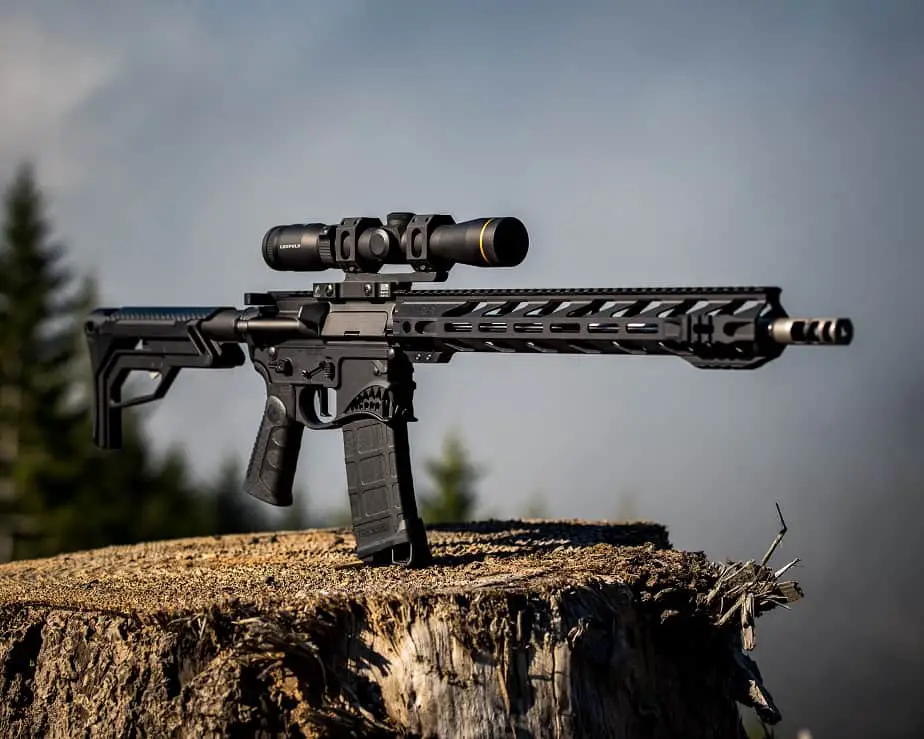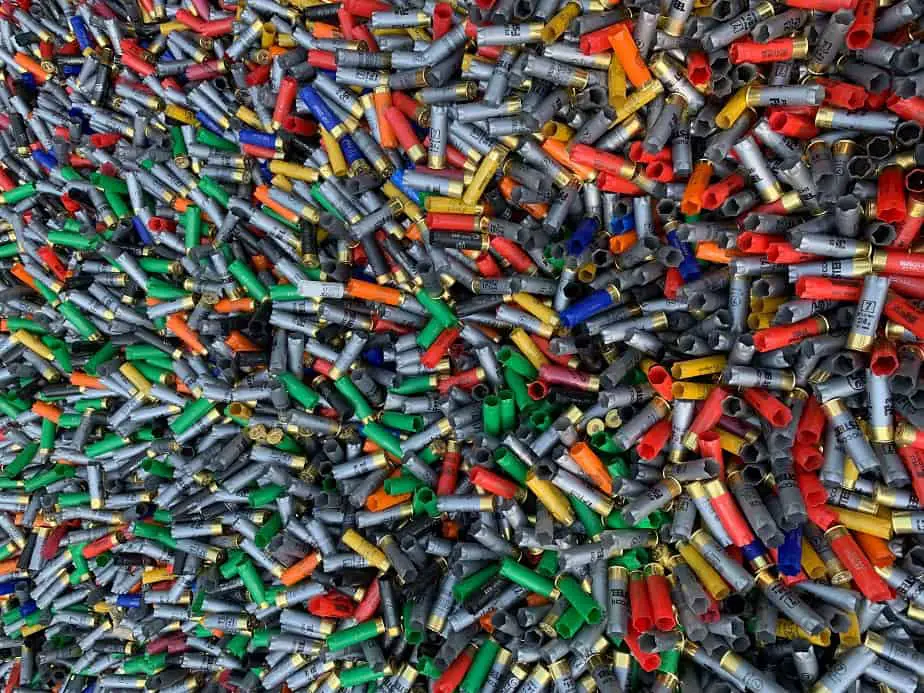I always enjoy answering entry-level questions about firearms. Let’s get started.
Rifles fire a single, fast moving bullet. Shotguns fire a slower load of small metal pellets, or sometimes a heavy single bullet called a slug. Shotguns are less precise than rifles and are better used on a close up or moving target. Rifles are more precise and better for a still or further target.

Design and Purpose of a Shotgun vs. a Rifle
A shotgun fires a load of “shot” from a cartridge known as a shotshell. These are loaded similar to rifle cartridges. They have a measured amount of gunpowder beneath a load of shot. between the powder and shot is a solid (cardboard, cork, or plastic) wad.
When the trigger is pulled, a small hammer hits the primer which ignites the gunpowder. The burning gunpowder pushes the wad, accelerating the shot down the barrel. Both the shot and the wad come out of the barrel. The wad eventually just falls off to the side.
The shot forms a round pattern after it exits the barrel. The further from the barrel the wider the shot spreads out. Imagine you throwing a handful of gravel. Right out of your hand, it’s contained in a small area, but in 20 feet, the gravel is all over the place. That’s about how shotguns work.
Right out the barrel, a load of shot is equal in diameter to the barrel. Makes sense. On average, a shotgun’s pattern will increase by one inch or every yard of increased distance. Some, like Wolf ammo, spread faster, but most manufacturers work to keep the pattern smaller.
Having a circle of shot instead of having just one bullet is better for moving targets. When a target is moving, like a flying duck or rascally rabbit, you aren’t afforded the time or concentration to line up sights like a rifle has. Most shotguns have only large crude sight, to make it quicker to see in a hurry.
And that works well because they don’t need to be aimed super precise like a rifle. Generally, Shotgunning is more a game of getting the gun as close as you can and firing a shot as quickly as possible before the animal runs or flies off. With a rifle, you’d never get the chance to make your precise shot.
Shotguns are often more aimed by feel than by actually aiming. It’s a learned skill that takes practice to develop. You can miss with a shotgun. Hunters, including myself, do all the time. Most shotgun misses on a moving target are because the shooter didn’t catch up to the target and fire quickly enough.
Shotguns have large bore diameters and fire at a lower internal pressure than rifles do. They shoot slower bullets, and are generally limited to a working max distance of around 30-60 yards.

What Makes a Rifle a Rifle?
The word rifle comes from an old French word “rifler”, which meat to scratch. They have shallow spiral groves cut into the inside of the barrel. It’s a gun making technique conceived in the 1400’s. The idea was to make a bullet more stabile by putting a spin on it, like when throwing a football. It worked.
Back then, rifles took many months of skilled labor to make, and cost more than a year’s salary.
Rifles shoot faster, lighter weight bullets than shotguns. Rifles are made to be aimed and fired more precisely, and accurately than a shotgun.
Rifles have a precise sighting system. They are great for shooting a still target at further distance. The average rifle hunter can make a good shot at 200 yards in adverse conditions. Skilled marksman can shoot much further. There is even a long range, 2-mile shooting competition by invitation only.
Many rifles can shoot within 1 Minute of Angle, which is a 10-inch target at 1,000 yards. the average shooter is not that skilled though.
How Much Do Rifles Cost?
The average rifle costs $400. Most common rifles sell for between $300 and $550. A precision rifle usually costs between $1,000 and $2,000. After buying a rifle, you will often need to purchase a scope for an additional $50 to $200. Standard AR-15’s range from $600 to $800.
You don’t need to spend a fortune. Most hunters are happy with a rifle in the $350 range. For shooting 200 yards and under, that shouldn’t be a problem. Using quality ammo that shoots well out of your gun will help you achieve maximum accuracy with any rifle.
My favorite rifle, the Ruger American Rifle, cost me $400, then I put a $300 Vortex Viper scope on it. It shoots incredibly well, and most importantly, I can shoot it well.
How Much do Shotguns Cost?
The average shotgun costs $500, but many are bought for under $300. A high-end Shotgun starts at $1,000. Shotguns in the $300 to $400 price range are great for most users and applications.
Most people view shotguns as a tool that will get beat up over time. A flawless glossy finish and pretty wood is less important than raw function. Shotguns are generally built as a utility tool: tough and affordable, but lacking a fancy look. That’s perfect for most shotgun owners.
There are single-shot shotguns, autoloading shotguns, and pump action shotguns to name a few styes. None of them are necessarily bad. Get what you like and can afford.

What is the difference between a 12-gauge and 20-gauge shotgun?
12-gauge shotguns are roughly 30 percent more powerful than a 20-gauge. 12-gauge shotguns have an inner bore diameter of 0.729 inches. A 20-gauge is 0.615, or 62 caliber. 12-gauge shotshells carry 1 – 1 ½ ounces of shot, 20-gauge is loaded with 7/8 – 1 ¼ ounces of shot. 20-gauge has 30% less recoil.
The common shotgun of military and police, once a 12-gauge pump action, is being replaced b a 20 gauge to make it more manageable to smaller framed shooters. Police favor the lower recoil of the 20 over the higher power of the 12. Personally, I prefer the 12-gauge. There are other options too.
The largest modern shotgun you can buy is a 10-gauge. There are gauges all the way down to 28 gauge, which has a .55 caliber bore, then there’s the .410. The .410 has a 0.410-inch bore. The old measurement of gauges doesn’t go past 28 so it’s listed by actual diameter.

Why Are Most Shotguns Measured in Gauges?
A shotgun’s gauge is equal to the number of bore sized lead balls in a pound. A 12 gauge bore diameter is .729 and 12 lead balls that size equals a pound. “Gauge” or “bore” was used to measure most guns in the 17th and 18th centuries. “Bore” and “gauge” were used interchangeably for years.

